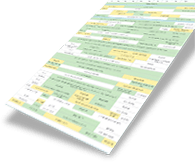Southern Ecological Solutions (SES) has a proven track record delivering projects where reptile survey and mitigation is required. Pride and diligence is taken to meet client’s ecological obligations and commercial needs in a cost effective and pragmatic way.
SES also has a specialist in house implementation team with expert ecological training allowing them to carry out works on sensitive sites. SES have gained vast experience in installing various exclusion fencing systems, hibernacula creation, habitat enhancements, habitat manipulation and working under ecological method statements.
Ecology
Britain has 6 native reptile species that are distributed throughout mainland Britain. They are the Common Lizard (Zootoca vivipara), Sand Lizard (Lacerta agilis), Slow- Worm (Anguis fragilis), Grass Snake (Natrix natrix), Adder (Vipera berus) and Smooth Snake (Coroneela austriaca).
Reptiles can be encountered in a wide range of habitats with the exception of Sand Lizards and to a lesser degree smooth snakes. Habitats associated with UK reptiles include heathland, rough and tussocky grassland, hedge rows, woodland edges, quarries, urban areas, road side verges, railway embankments, brownfield sites and boggy areas. Sand Lizards have more specific habitat requirements such as heath land sites and sand dune systems. They all require access to sunny patches with access to ground cover.
Reptiles are generally active from early spring to late autumn and enter a period of torpor (hibernation like state) when the temperature drops through the winter months. During active periods these cold blooded animals spend much of their time basking in the sun to raise their body temperature before hunting for prey. Invertebrates form the major part of the Lizard species’ diet, whilst Grass snakes will feed on amphibians and the Smooth Snake and Adder prefer lizards and small mammals.
Legal Status and Planning Policy Protection
Common Lizards, Slow Worms, Grass Snakes and Adders are protected under section 9(1) & 9(5) of the Wildlife and Countryside Act 1981 (as amended). It is offence to:
- Intentionally, or recklessly, kill or injure any of the above species, and/or;
- Sell, or attempt to sell, any part of the species, alive or dead.
The sand lizard and smooth snake receive ‘full protection’ under section 9 of the Wildlife and Countryside Act (1981) and regulation 39 and the Conservation of Species and Habitats Regulations (2010). Read together it is an offence:
- Deliberately kill, injure or capture any wild animal of European protected species;
- Deliberately disturb wild animals of any European protected species in such a way to be likely to significantly affect:
- The ability of any significant groups of animals of that species to survive, breed, rear or nurture their young; or
- The local distribution of that species.
- Recklessly disturb sheltering European protected species or obstruct access to their resting place;
- Damage or destroys breed sites or resting places of such animals;
- Deliberately takes or destroys the eggs of such an animal;
- Possess or transport or any part of a European protected species, unless acquired legally;
- Sell, barter or exchange any part of a European protected species.
The maximum fine per offence is £5000 and if more than one animal is involved, the fine is £5000 per animal The Countryside and Rights of Way Act 2000 amendment contains a provision for a custodial sentence of up to 6 months instead of, or in addition to, a fine. Along with a lengthy development delay until appropriate mitigation has been agreed and completed.
The Natural Environment and Rural Communities Act 2006 (NERC) also lists reptile species of principle importance under Section 41 and Section 40 requires every public body in the exercising of its functions (in relation Section 41 species) ‘have regard, so far as is consistent with the proper exercise of those functions, to the purpose of conserving biodiversity’. In addition, local authority planning departments should also meet the requirements of chapter 11: Conserving and enhancing the natural environment, of the Nation Planning Policy Framework (2012); which requires planners to not only protect biodiversity, but where possible to enhance. Obligations under planning policy represent a ‘material consideration’ to the local planning authority with ecological survey being required before planning permission can be granted.
Survey
Ambient air temperature is an essential factor for reptile ecology surveys after suitable habitat has been located. Reptile surveys conducted between 10 and 17 degrees centigrade have the most chance of success. The key months for reptile surveys are April, May and September with April and May being advantageous because it is reptile mating season, which means they will be more obvious and less wary of observers. Also the temperatures are generally lower during these months and as such it will take longer for the reptiles to warm up so they must spend more time basking. During the warmer summer months animals will have to spend less time basking due to the increase in ambient temperature, thus reptile ecology survey visits will be conducted earlier in the day during the hotter summer months. However the temperature on the day of the visit will ultimately determine what time the survey takes place.
Surveying for Smooth Snakes and Sand Lizards would involve ‘disturbance’ and therefore contravene its strict protective legislation thus a Natural England licence is required.
Reptile Mitigation
SES have designed and implemented numerous large and small scale mitigation schemes including avoidance of impacts through habitat assessment, translocation of animals to on or offsite receptor habitats and habitat manipulation. We also have experienced in-house teams to install exclusion fencing and deliver habitat creation as required.



